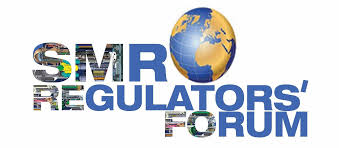Part 2 of 2 Parts (Please read Part 1 first)
Multi-module SMR designs will certainly have operational and safety benefits but they may require specific consideration for nuclear safety. The lessons learned from the terrible nuclear disaster that occurred in Fukushima, Japan in March of 2011 have highlighted some issues that should be considered in multi-module installations. Herviou said, “The SMR Regulators’ Forum considers that it would be beneficial for both designers and regulators to think beyond the single unit mindset. This might involve extending their considerations to whole site risks including developing methods of aggregating risk from differing on-site sources.”
The work of the Forum is expected to result in: position statements on regulatory issues; suggestions for revisions to or entirely new IAEA documents; information to assist regulators in the enhancement of regulatory frameworks; reports on regulatory challenges with discussion on possible paths forward and suggestions for changes to current international codes and standards for nuclear safety.
Greg Rzentkowski is the Director of IAEA's nuclear installation safety division. He said, “Although currently we have no plans to develop specific safety standards for SMRs, we will use these insights in the establishment of our holistic, technology neutral, framework for safety of nuclear installations, which also applies to novel designs, to help harmonize international approaches by using the IAEA safety standards.” He added that in order to be effective, the nuclear regulators must be prepared to recalibrate the current system of regulations by increasing reliance on risk and performance insights.
One of the major selling points of SMRs may actually be one of its major risks. If SMRs are manufactured in modules in a regular factory process, the quality control for the assembly of components is critical. If a problem arises on the production line of a SMR module or subcomponent, then it would be present in each SMR module or subcomponent until it is identified and corrected. With sufficient time, multiple SMRs with the flaw on the production line could be finished, shipped out, installed at a location, and put into operation. If the manufacturing flaw could have an impact on the safe operation, then when it is discovered, there would, of course, be a call to shut down all of the SMRs that had been shipped out with the flaw.
In the past few years, lax quality control at a factory that manufactured components for nuclear power plants was discovered that called into question the safety of any nuclear power plant in the world that had one of the flawed components from the factory with the problem. Nine operating nuclear power plants in the U.S. had to have special inspections in order to be certified as being safe to operate.
If SMRs become popular and many are manufactured, then a design flaw that is not caught at the factory could result in the temporary shut down of many operating SMRs which, in turn, could interfere with significant electrical generation.
While the manufacture of a single SMR may be cheaper than the construction of a standard nuclear power reactor, it is an open question as to whether the manufacture of the three SMRs necessary to match the output of a single gigawatt conventional reactor would be cheaper than the construction of a regular gigawatt reactor.
Finally, SMRs are just being developed. It will take years of research, development, testing and licensing before any SMR is actually put into commercial operations. It may turn out that SMRs will only be useful in remote locations without the infrastructure necessary to construct and operate a conventional nuclear power reactor.
